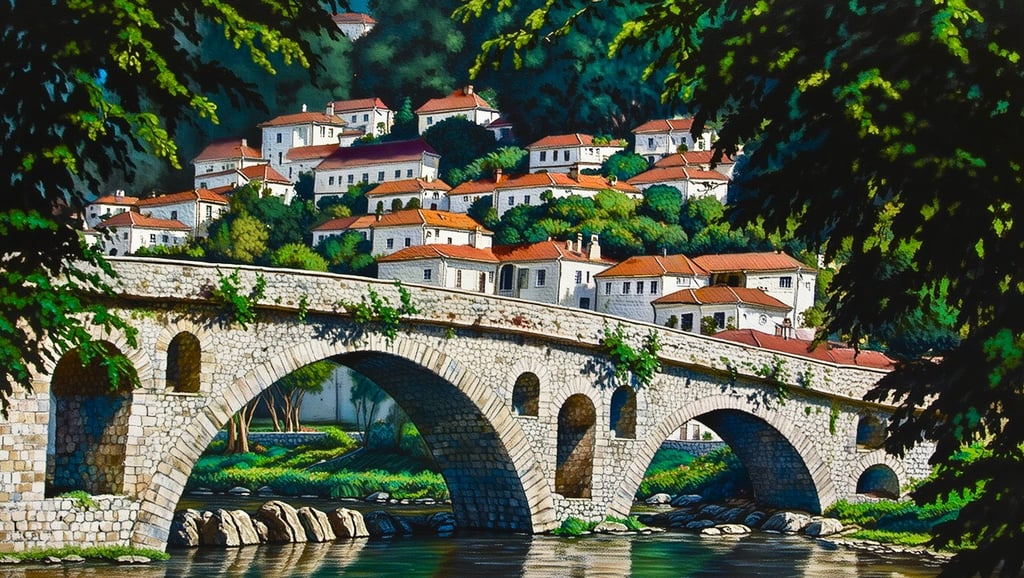The Historic Centres of Berat and Gjirokastra: Albania’s Double Dose of Stone and Story
Discover the historic centres of Berat and Gjirokastra, Albania’s UNESCO World Heritage towns. Explore Ottoman houses, stone fortresses, vibrant streets and cultural treasures in the “City of a Thousand Windows” and the “City of Stone.”
ECHOES OF ELSEWHEREEUROPEALBANIAUNESCOARCHITECTUREHISTORYVILLAGES & TOWNS


Berat and Gjirokastra, Albania
Albania is not always the first country that springs to mind when people rattle off their European bucket lists, which makes discovering it all the more satisfying. And if you want to get to the marrow of Albania’s history, style and stubborn charm, you cannot do better than the UNESCO-listed historic centres of Berat and Gjirokastra. One is called the “City of a Thousand Windows,” the other the “City of Stone.” Together they are proof that Albania has never done anything by halves.
These two Ottoman-era towns, draped dramatically over hills and valleys, are less like sleepy relics and more like time capsules with better coffee. Berat and Gjirokastra are living places, where laundry flaps from balconies, children chase footballs through cobbled alleys, and minarets and churches play architectural chess across the skyline.
Berat: The City of a Thousand Windows
Berat’s nickname is not poetic exaggeration. The city’s hillside is practically blinking at you, covered in rows of white Ottoman houses with so many windows that one suspects they were competing with each other. The old town is divided into neighbourhoods that reflect its historic tolerance: the Muslim quarter of Mangalem, the Christian quarter of Gorica, and the mighty Berat Castle looming above like a stern schoolteacher.
Inside the castle walls, life still hums, with families occupying stone houses and Byzantine churches that feel like they were painted yesterday. Museums dedicated to icons and ethnography remind you that Albanians take culture very seriously, even when surrounded by goats.
Gjirokastra: The City of Stone
Gjirokastra, further south, is built almost entirely from the stuff. Roofs, roads, stairways, walls… stone everywhere, as if the town had a sponsorship deal with geology itself. The Ottoman-era houses here are tall, fortress-like mansions with tower-like silhouettes. They once belonged to wealthy merchants and now stand as monuments to the art of turning rock into elegance.
Presiding over the city is the immense Gjirokastra Fortress, so large it feels more like a small district than a defensive structure. Its walls have witnessed centuries of Albanian history, from Ottoman rule to twentieth-century upheavals. Today it doubles as a stage for folk festivals, where music and dance bring its stony courtyards to life.
Getting There Without Testing Your Sanity
Berat is about a two-hour drive from Tirana, Albania’s capital, on roads that are reasonably forgiving. Gjirokastra requires more commitment: about three hours south of Tirana, closer to the Greek border. Public buses and minibuses (called furgons) will get you there if you enjoy communal seating arrangements, though renting a car offers the chance to stop in villages along the way.
Where to Stay: Between Stones and Stories
Both Berat and Gjirokastra excel at family-run guesthouses and boutique hotels tucked inside restored Ottoman homes. Expect stone walls, wooden beams, embroidered linens, and the kind of hospitality that ensures you will not escape without being offered raki. In Berat, stay near the Mangalem or Gorica quarters for the full thousand-window experience. In Gjirokastra, sleeping in a centuries-old tower house will have you feeling equal parts aristocrat and adventurer.
Things to Do (Other Than Counting Windows and Stones)
Castle Time Travel: Wander Berat Castle and Gjirokastra Fortress. Both are sprawling complexes stuffed with history, views and the occasional friendly stray cat.
Ethnographic Immersion: Visit the Ethnographic Museum in each town for an insight into daily life centuries ago. Spoiler: the kitchens put modern minimalist décor to shame.
Ottoman Architecture Appreciation: Stroll through narrow alleys and pretend you are an architecture critic. In these towns, even a wooden door feels like it deserves a review.
Faith and Harmony: Step into mosques and churches that co-exist like seasoned neighbours, reminding visitors that coexistence is not a modern invention here.
Festival Fever: If you time your visit well, catch Gjirokastra’s folk festival or Berat’s local celebrations. Music, dance, and the occasional enthusiastic goat make these events memorable.
Why Berat and Gjirokastra Still Matter
These towns are not mere museum pieces. They are still inhabited, lived-in and loved, which is part of their charm. Their survival through centuries of empire, communism, and change is testament to resilience. They embody a cultural blend that is distinctly Albanian: Ottoman flair, Byzantine devotion, Balkan stubbornness, and Mediterranean warmth.
Best Time to Visit
Spring (April to June) and autumn (September to October) are golden. The weather is gentle, the tourist numbers manageable, and the landscape rich with colour. Summer can be scorching, especially in Gjirokastra, where stone seems to double as a solar panel. Winter is quieter, but the charm of these stone towns against misty hills is worth packing an extra jumper.
Final Thought
The historic centres of Berat and Gjirokastra are not just picturesque stops on a Balkan road trip. They are living lessons in endurance, artistry and charm. Visit Berat for its hillside of windows gazing across the river. Visit Gjirokastra for its stone houses and fortress majesty. Visit both, and you will leave with a deeper understanding of Albania, plus a suspicious fondness for Ottoman chimneys.




